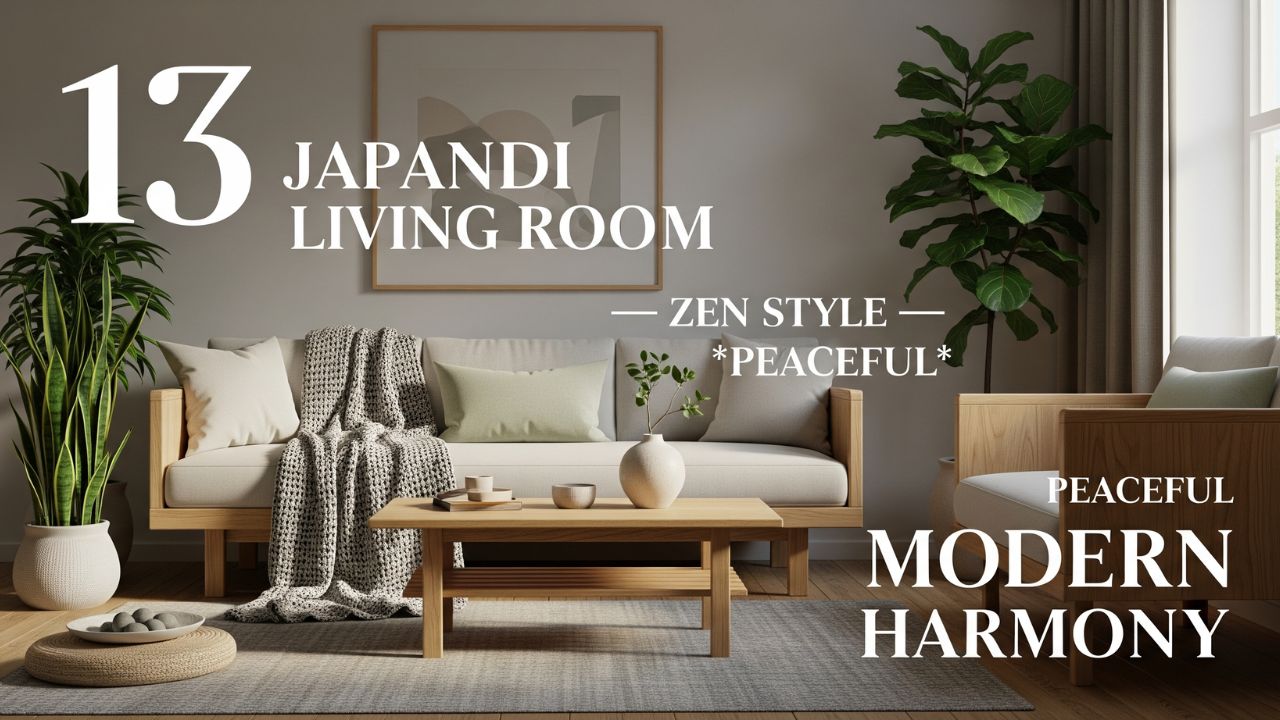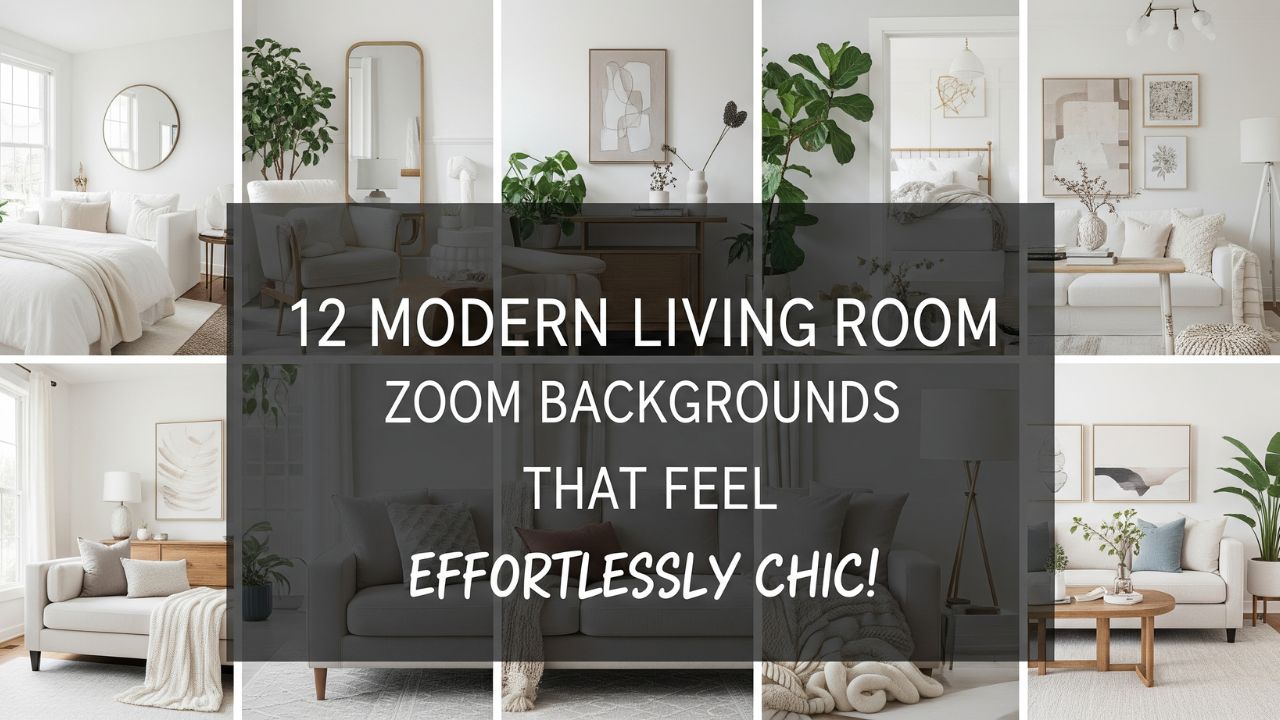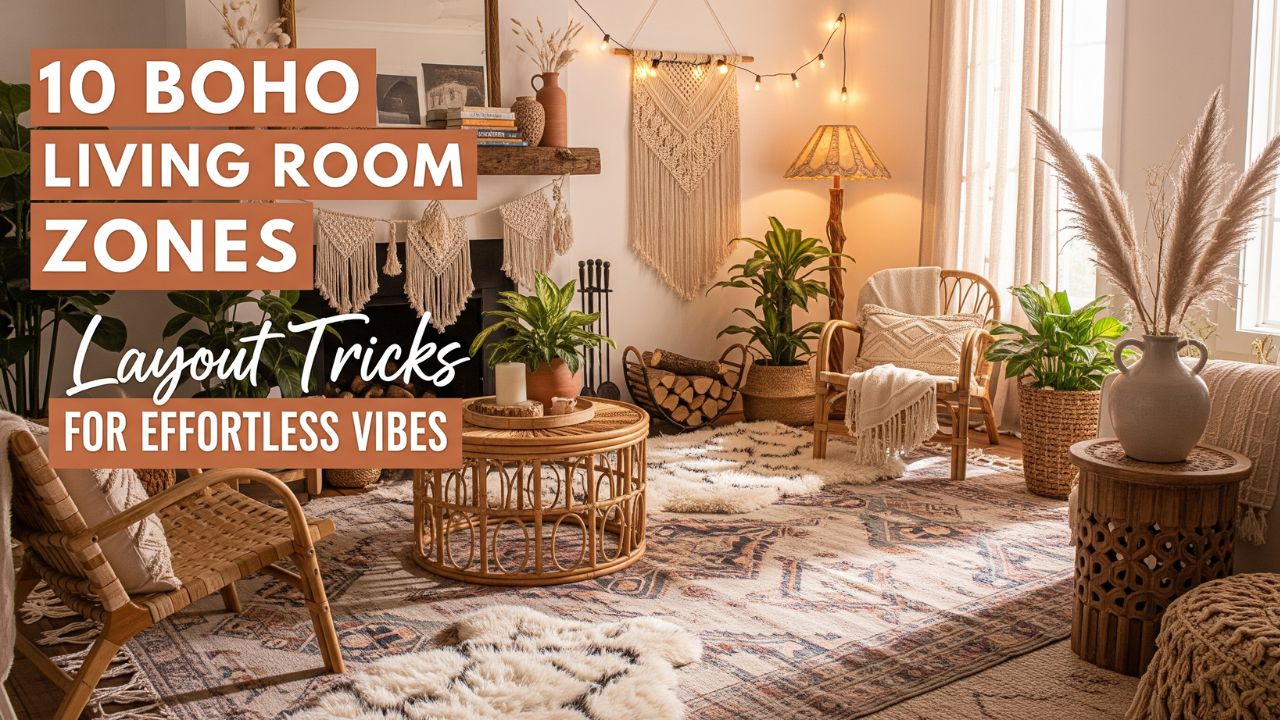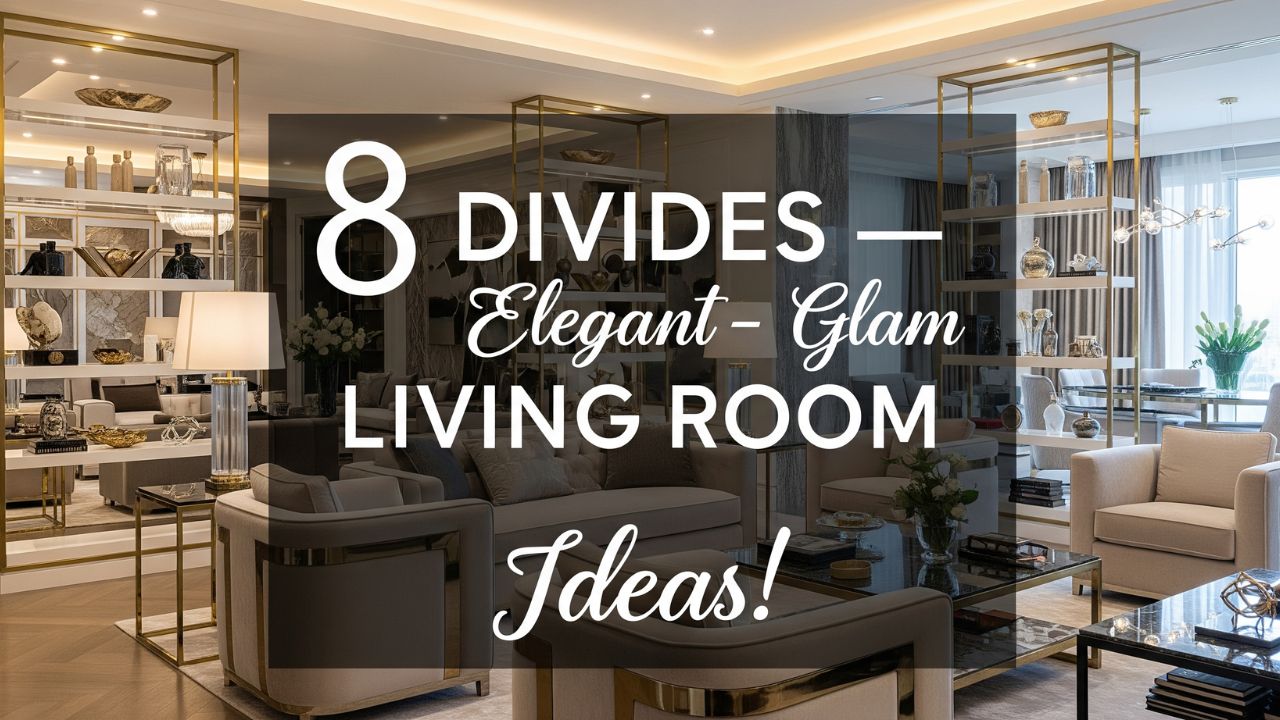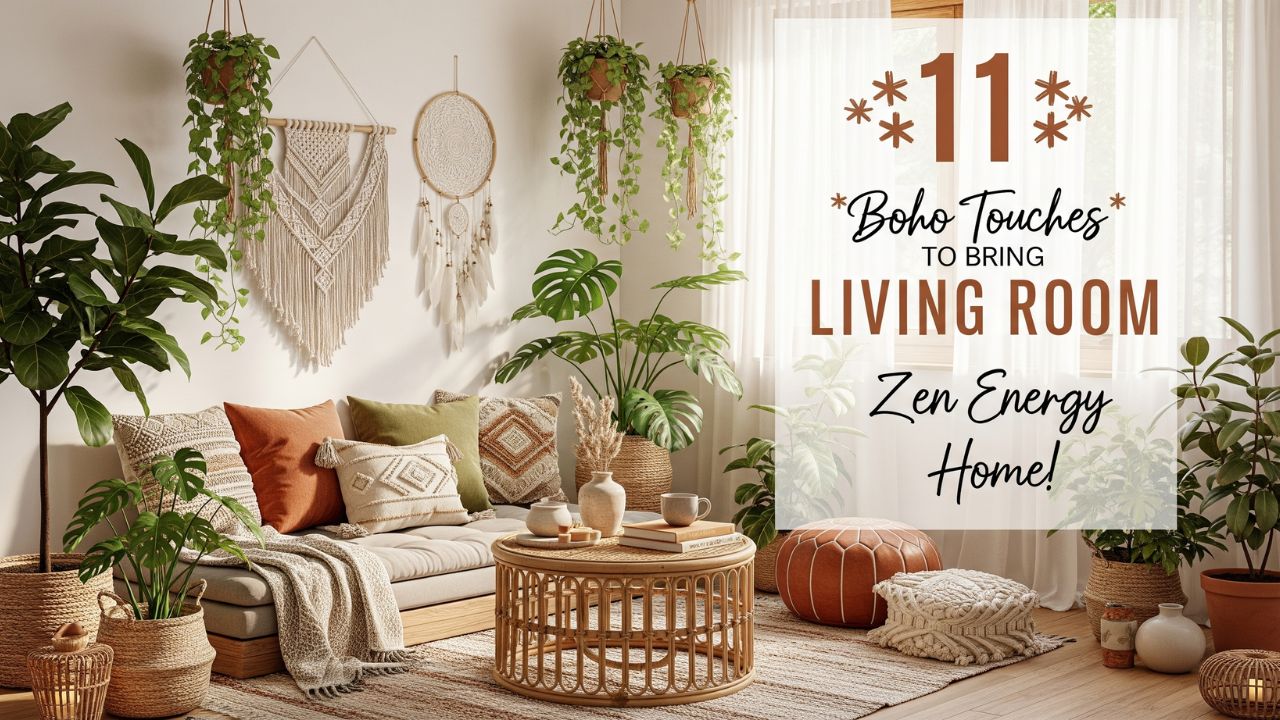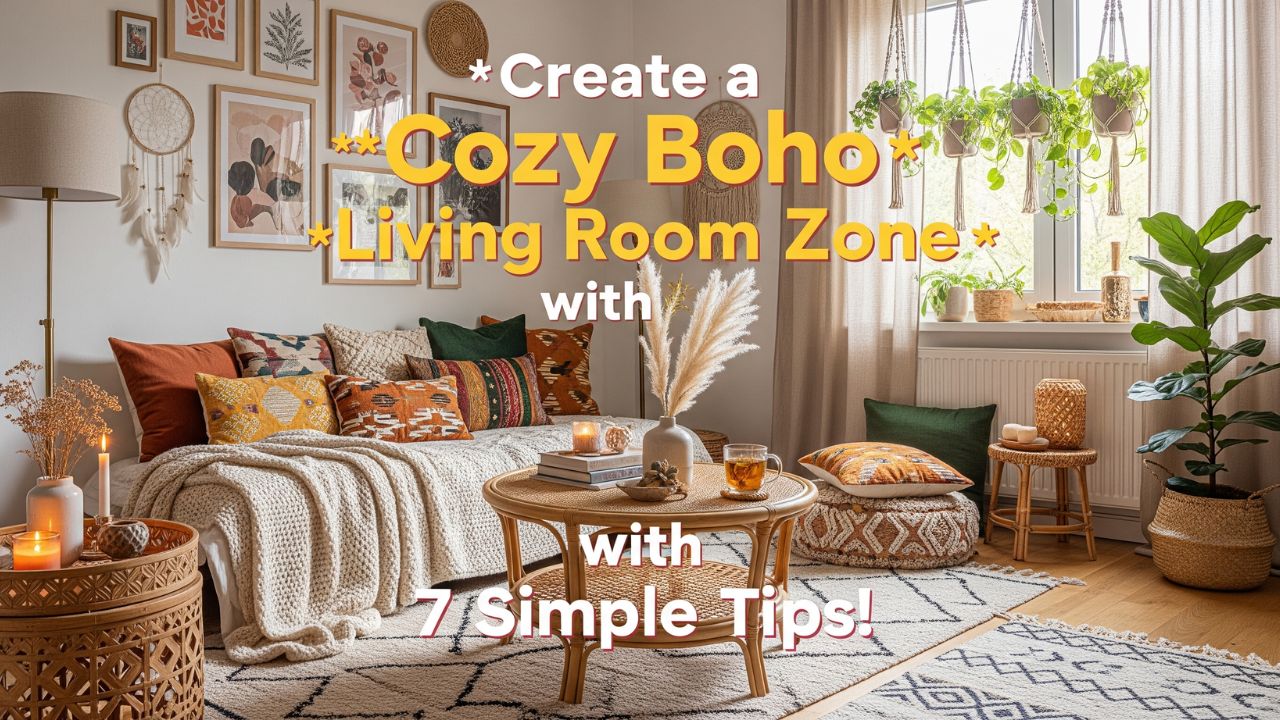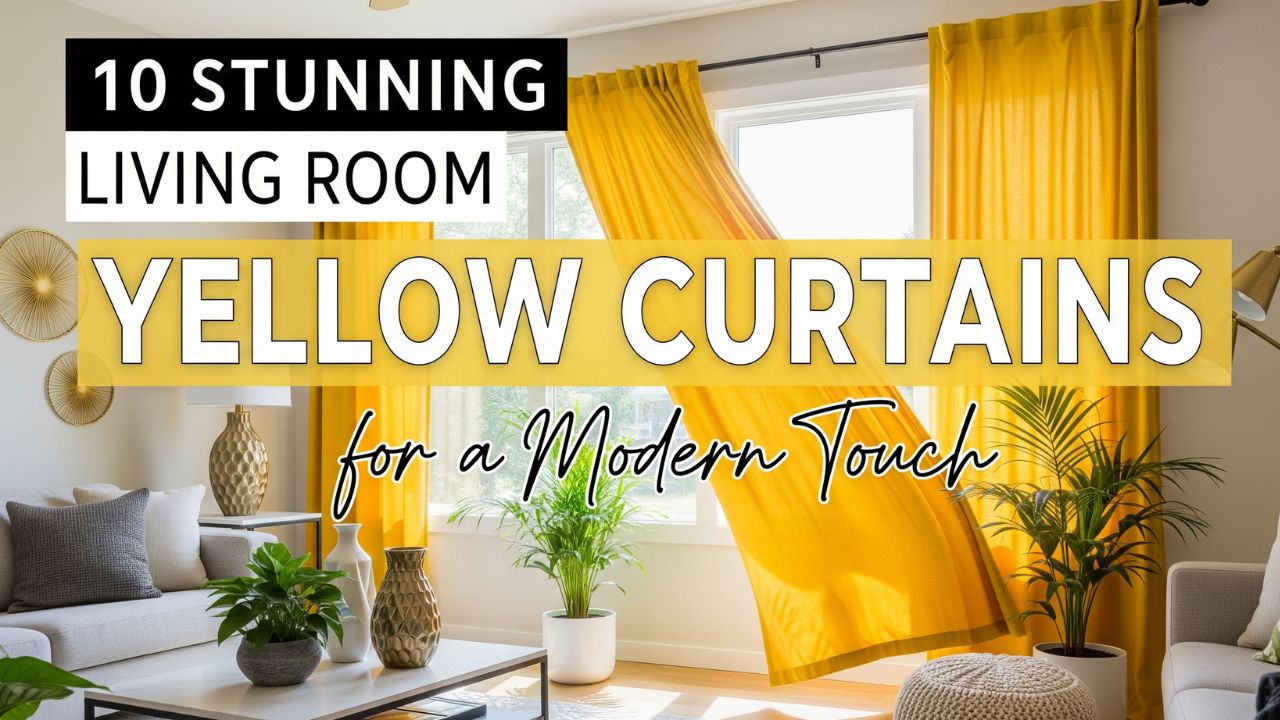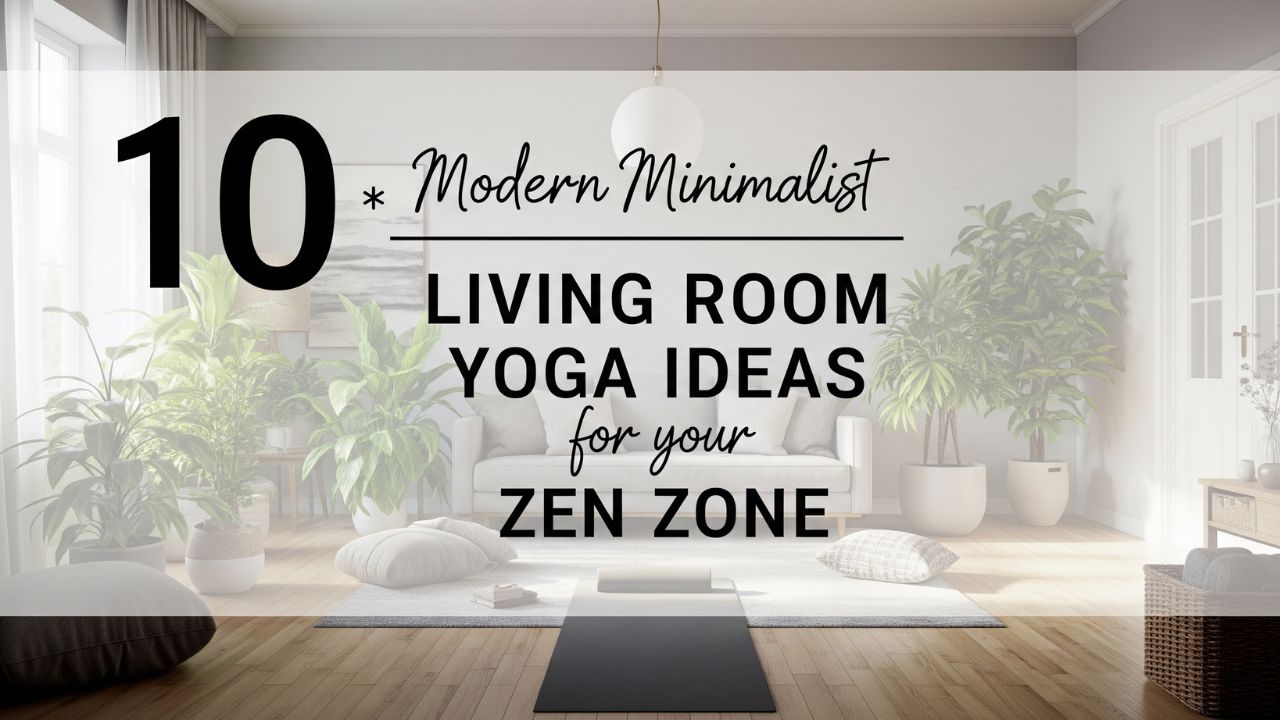Most living rooms fail not because of poor design — but because of poor space logic. You can have the most expensive sofa in the world, but if it eats your walking area or blocks natural light, the room instantly feels smaller.
Here’s the truth: modern living rooms aren’t about furniture quantity — they’re about furniture intelligence.
And the secret to unlocking more space without compromising comfort lies in smart seating choices.
In this guide, we’ll explore 13 modern living room seating ideas that not only elevate your home’s style but also help you maximize every square inch of space — from modular sofas to hidden benches and dual-purpose ottomans.
By the end, you’ll see how a few clever swaps can make your living area feel twice as big and infinitely more functional.
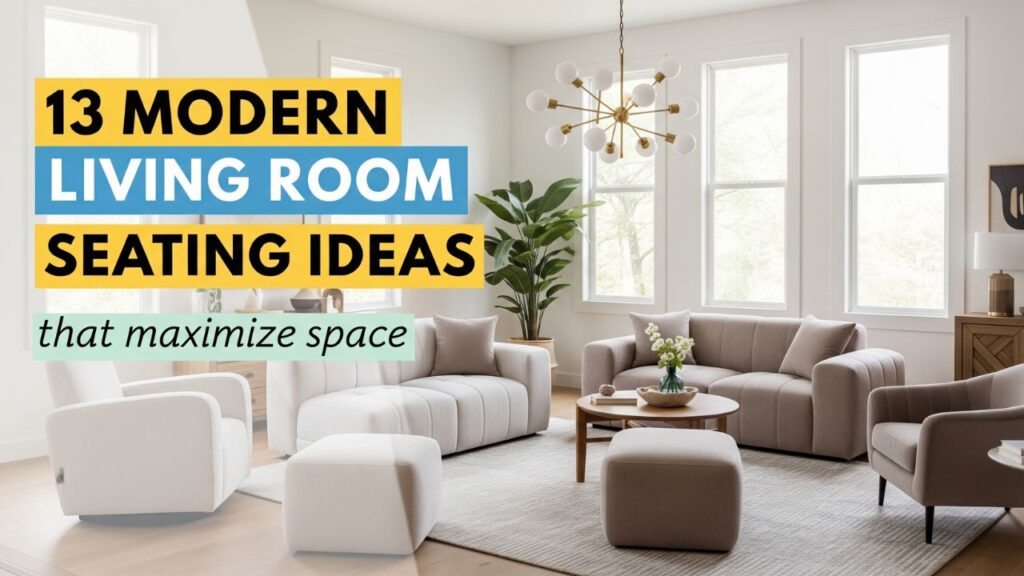
Table of Contents
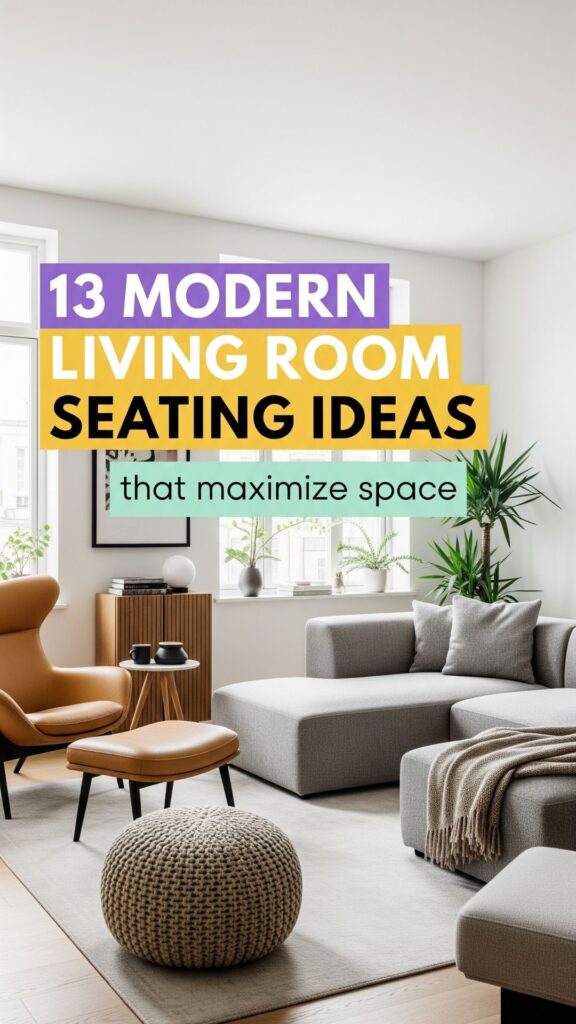
13 Modern Living Room Seating Ideas
1. Modular Sofas That Move with You
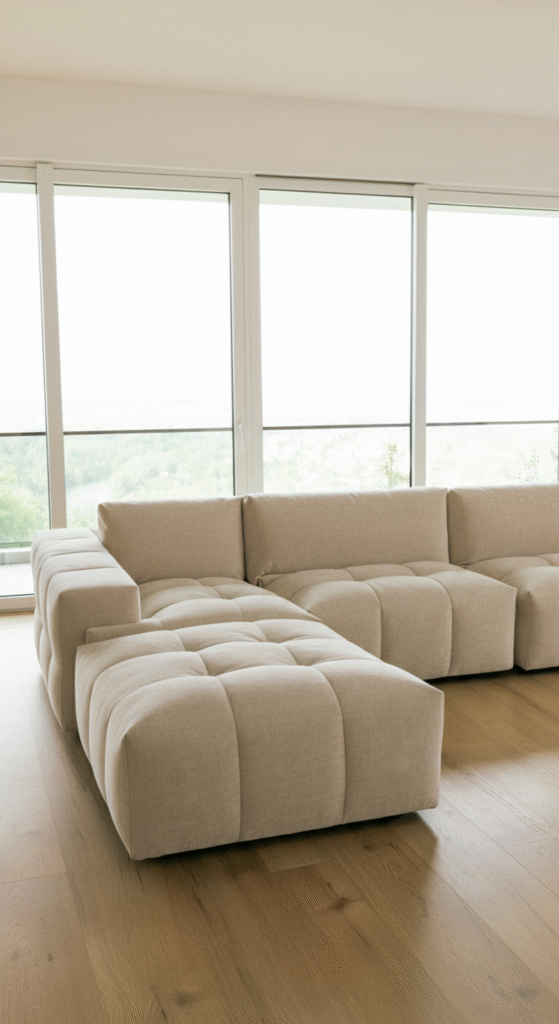
Modular sofas are the kings of adaptability. You can rearrange them into a sectional, separate the pieces for small gatherings, or expand them for movie nights.
Do you know? The first modular sofa was introduced in the 1960s — designed specifically for compact urban apartments.
Choose low-profile, neutral-toned modules to keep your room airy and cohesive. They make cleaning easier and adapt perfectly to any guest count.
2. Corner Sectionals for Unused Spaces
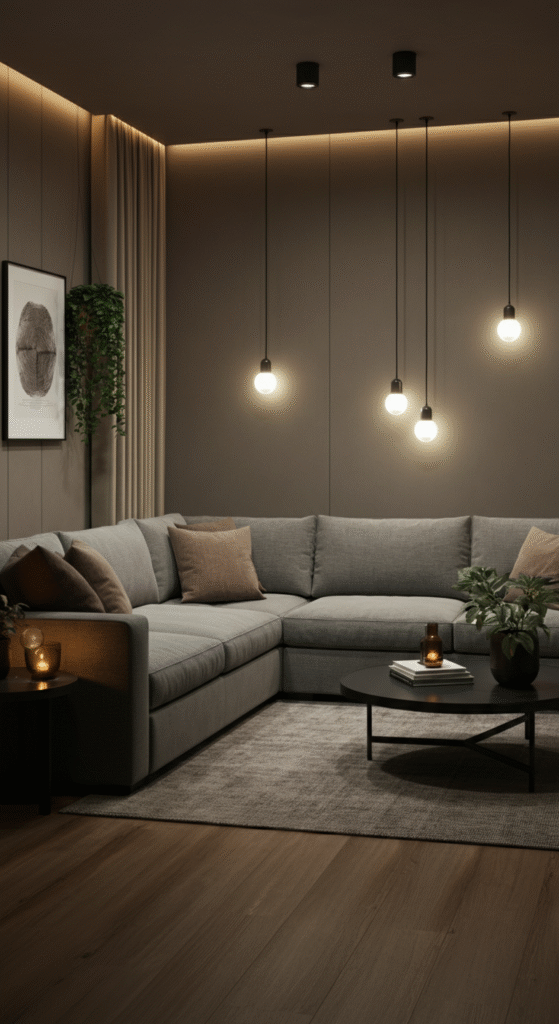
That awkward corner you’ve been ignoring? It’s pure seating potential. Corner sectionals wrap around walls and give your room a cozy, enclosed feel while maximizing every inch.
Stick to slim-arm designs and raised legs to keep the layout open. Bonus: add an integrated chaise for lounging without needing an extra chair.
3. Floating Benches under Windows
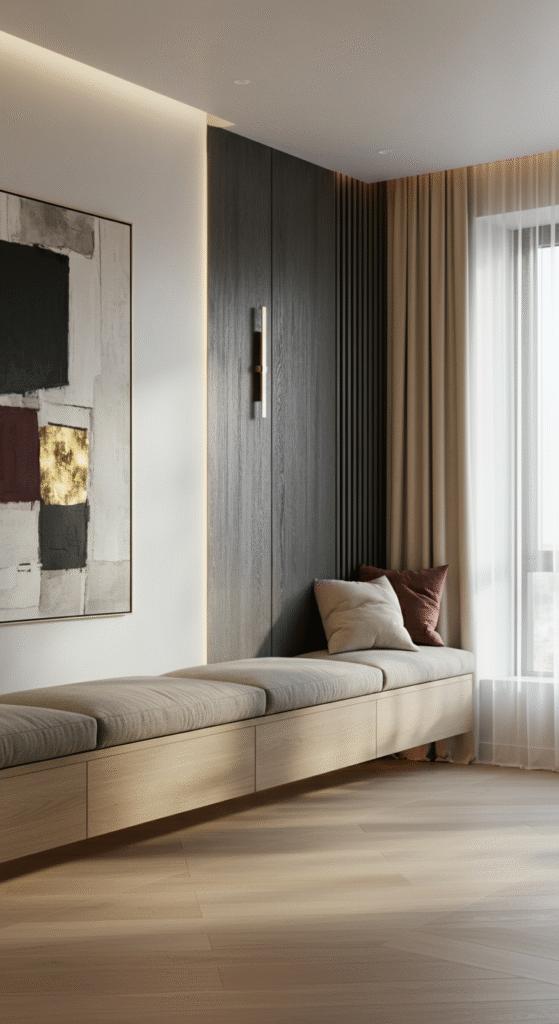
Window benches don’t just look elegant — they create usable space out of thin air.
Install a built-in or floating bench below your window and pair it with soft cushions for the perfect reading nook.
Many homeowners use storage drawers beneath them, blending form with function seamlessly.
4. Nesting Ottomans That Hide in Plain Sight
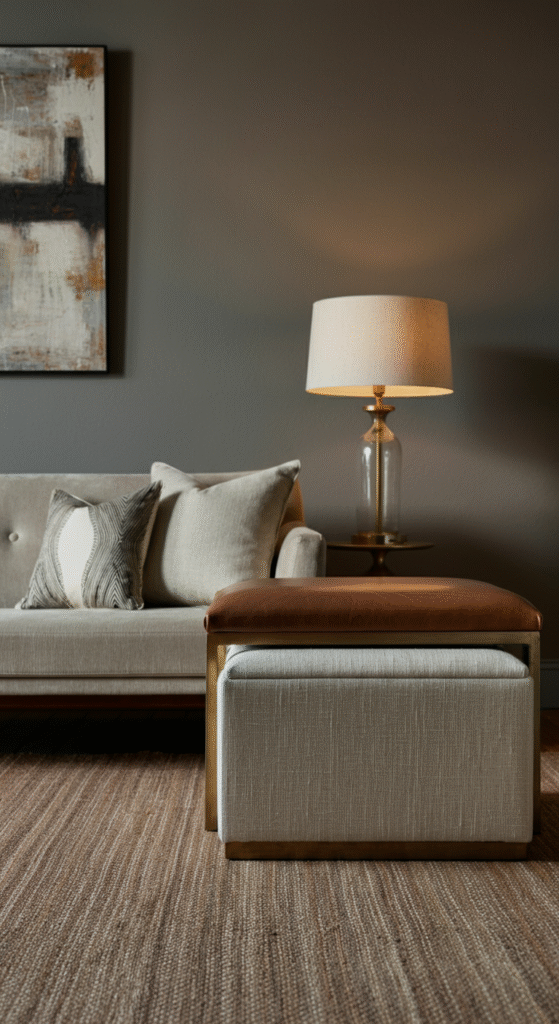
Forget bulky coffee tables — nesting ottomans are space-saving champions. Use one as a table, another for seating, and tuck them away when you’re done.
Choose leather or textured fabric for contrast. Some come with hidden storage, which doubles your functionality without clutter.
5. Slim Armchairs with Sculptural Forms
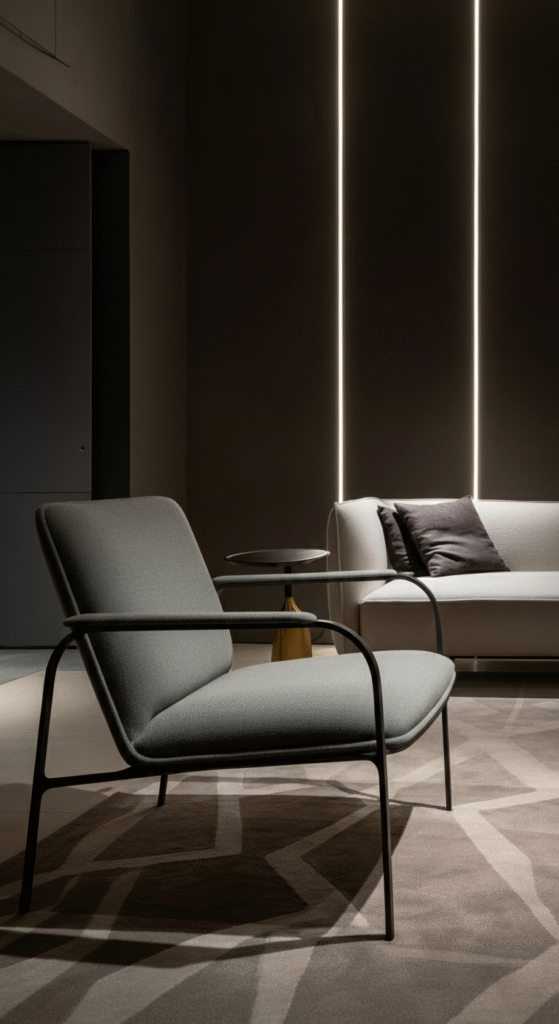
Armchairs can easily overpower a compact living room — unless you go slim.
Modern designs with sculptural, open bases visually lighten the room.
Pair two sleek accent chairs across your sofa to maintain flow without overwhelming space.
6. Built-In Wall Seating
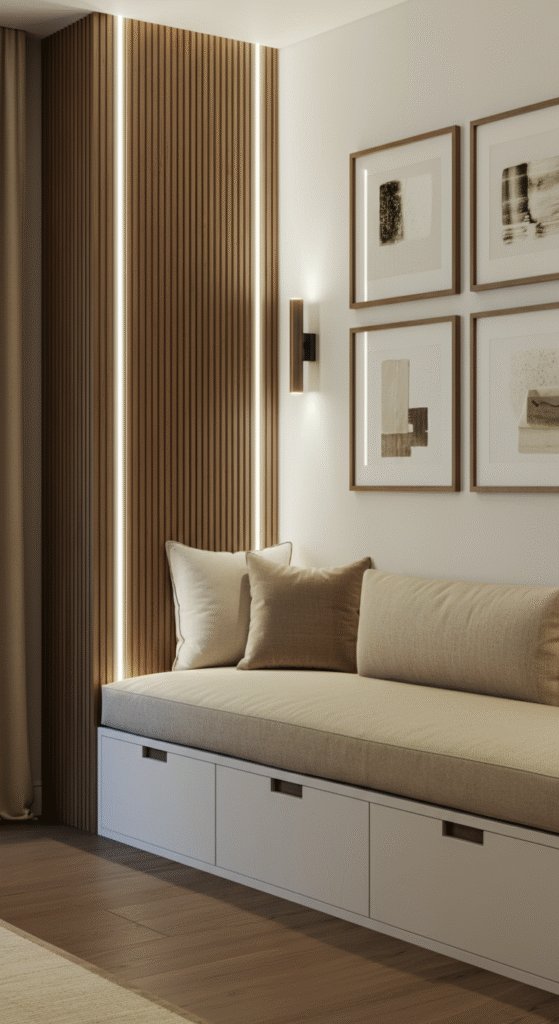
This is a game-changer for small apartments. Built-in benches along one wall can seat multiple people while freeing up the center area.
Top it off with plush cushions and a few throw pillows. Add under-seat drawers or pull-out baskets for bonus storage.
7. Loveseats Instead of Full Sofas
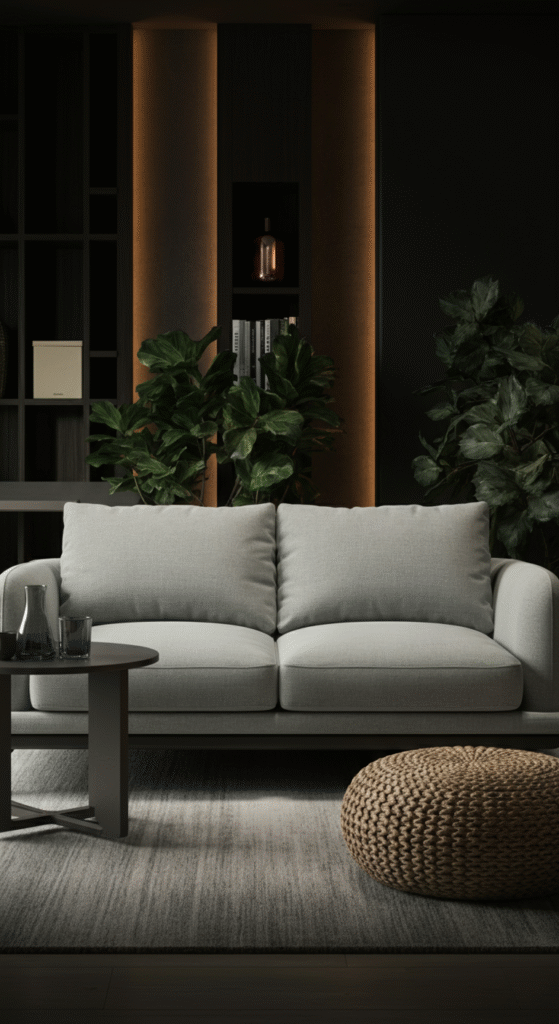
If your space doesn’t allow for a full sectional, opt for a loveseat. It’s cozy, stylish, and practical for two-person seating.
Fun fact: The term “loveseat” originated in the 17th century to describe a wide chair made for… yes, couples.
Combine it with nesting tables or a compact pouf to keep the flow open and modern.
8. Dual-Purpose Storage Ottomans
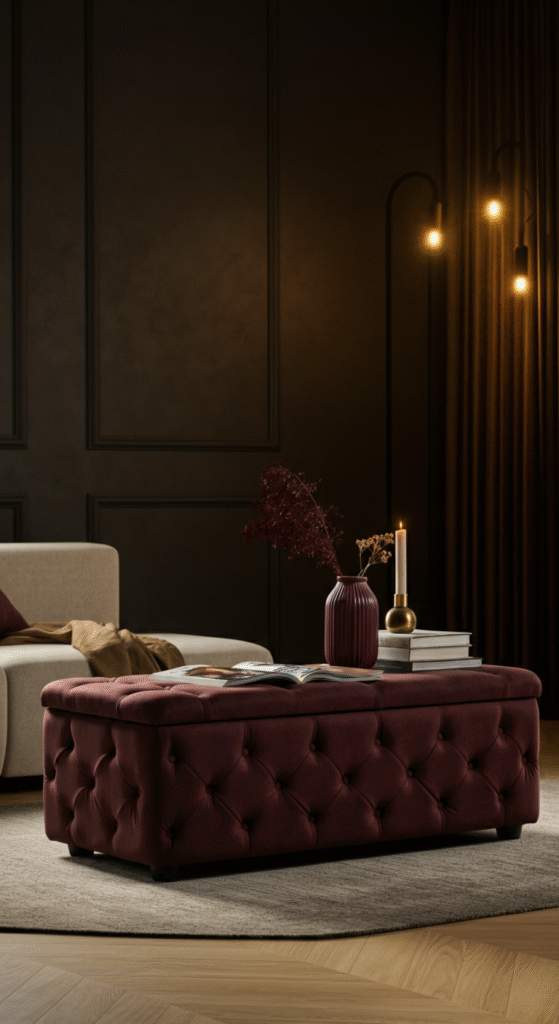
Storage ottomans are lifesavers for modern homes. They can hide your blankets, books, or kids’ toys — and still serve as a footrest or extra seat.
Choose tufted tops for a touch of luxury or flat lids for a minimalist appeal. Round designs also help soften boxy layouts.
9. Swivel Chairs for Flexible Arrangement
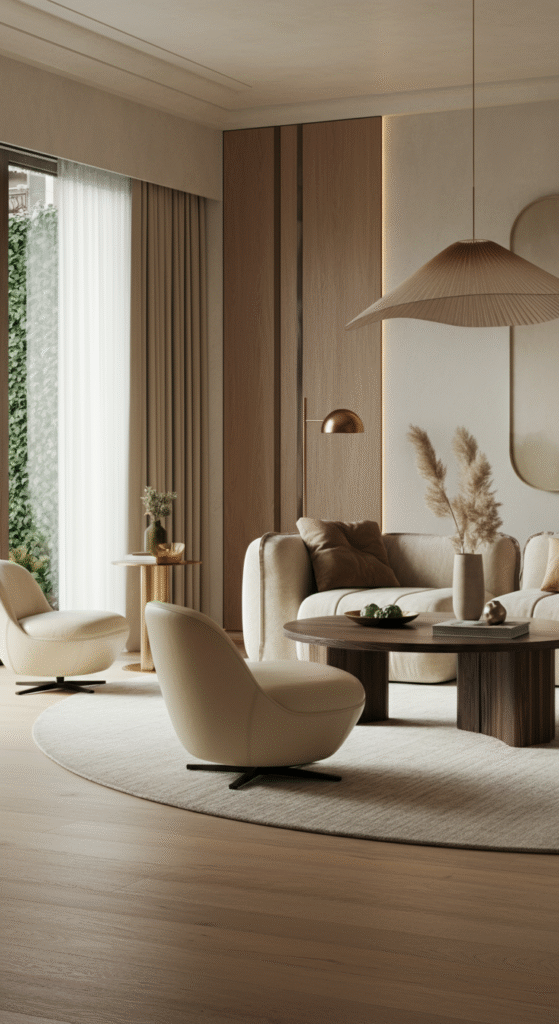
Swivel chairs let you pivot between conversations, TV, and the window view effortlessly.
They’re compact yet dynamic, adding movement and energy to a static layout. Go for neutral upholstery or subtle patterns to keep things balanced.
10. Poufs for Casual Versatility
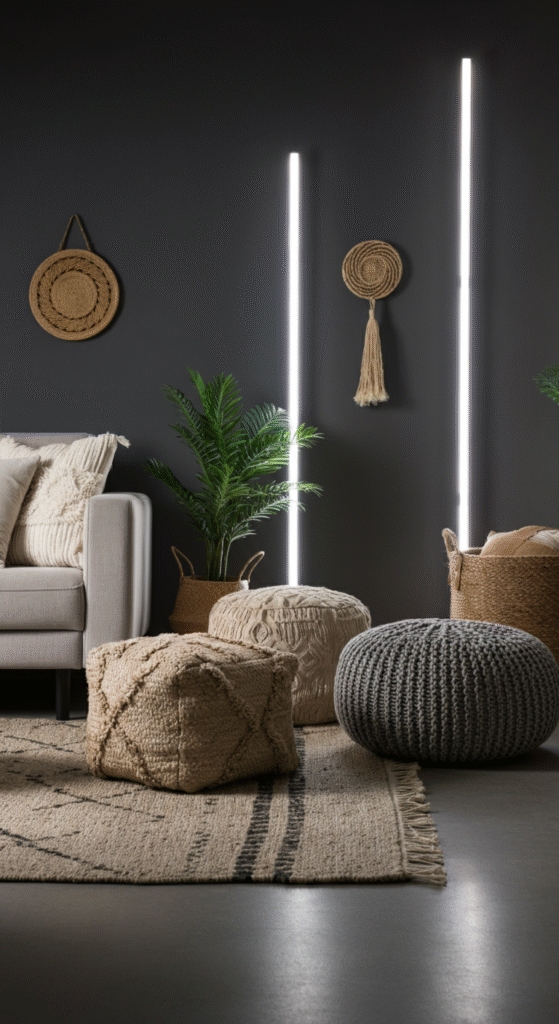
Poufs might seem small, but they’re incredibly adaptable. You can use them as a footrest, mini-table, or even emergency seat.
Interesting fact: In Moroccan culture, poufs were originally handmade from leather and used in large family gatherings as low seating to promote intimacy and connection.
Today, modern poufs come in woven jute, velvet, or wool to complement any décor style.
11. Daybeds That Double as Sofas
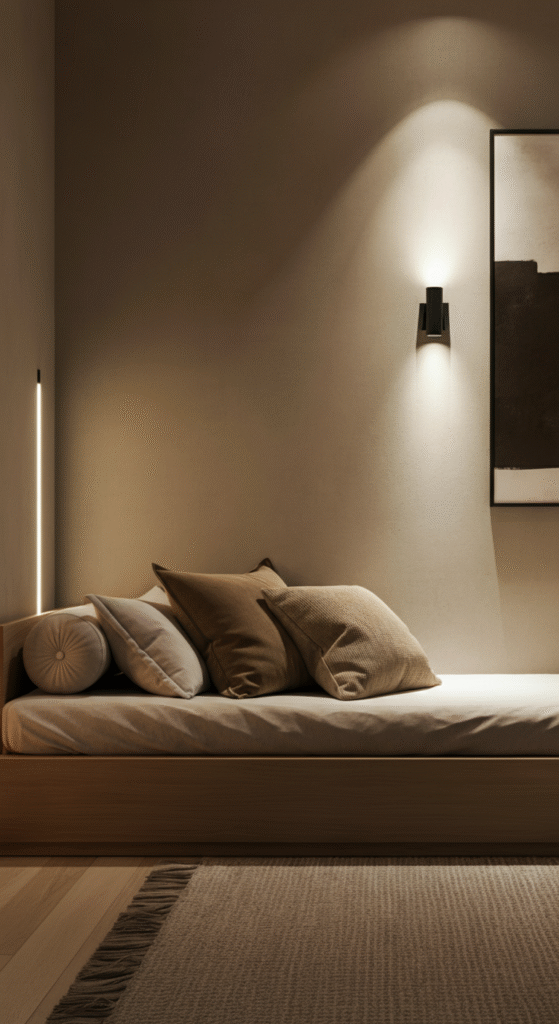
Daybeds merge the best of both worlds — a stylish couch by day and a comfy bed by night.
Perfect for studio apartments or multi-purpose living areas, they provide lounging comfort without eating up space. Pair them with plush cushions and a textured throw to make them blend naturally into your décor.
12. Transparent Acrylic or Lucite Chairs
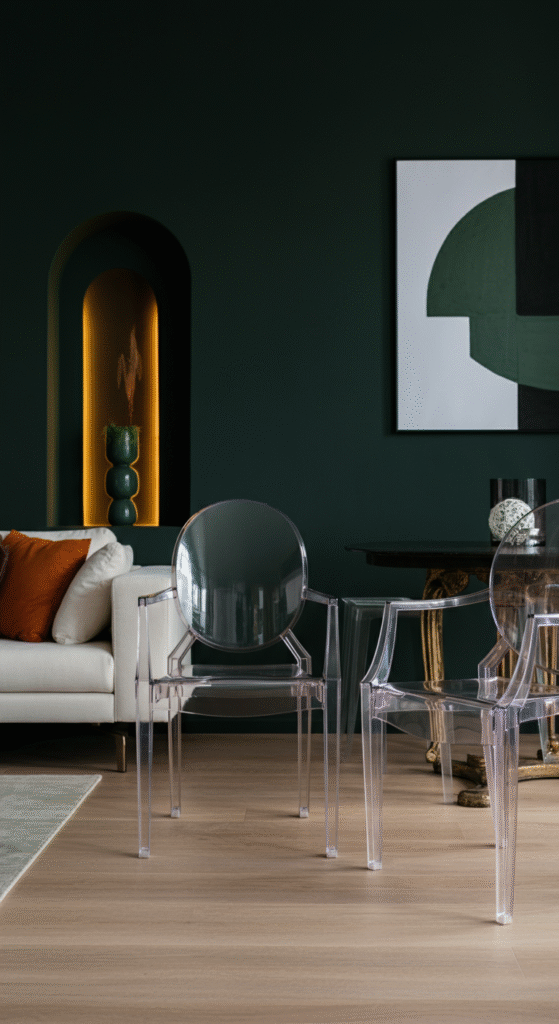
Sometimes, less visual weight equals more physical space. Transparent seating like acrylic or Lucite chairs trick the eye into thinking your room is larger.
They’re perfect for minimalist, modern, or contemporary interiors and pair beautifully with wood or metal finishes.
13. Foldable and Stackable Seating
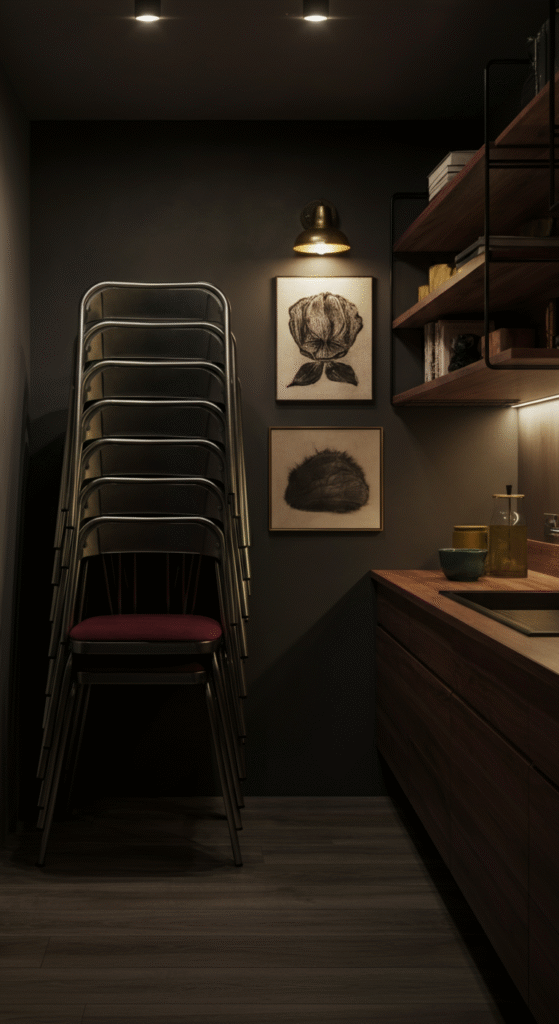
The ultimate hack for flexible living. Foldable chairs, stackable stools, and collapsible benches can disappear when not needed.
Keep a set of them neatly tucked away for guests or small parties. Choose sleek metal or bamboo designs to keep things stylish even when stored.
Bonus Tip: Layered Seating for Social Flow
Layering seating heights — such as mixing a low ottoman, mid-height sofa, and taller accent chair — helps your space feel intentional and well-zoned.
This trick visually balances the room while offering varied comfort options for different activities.
How to Choose the Right Seating Combination
Before diving into styles, analyze how you use your space daily.
- For entertainers: Modular sectionals and ottomans make reconfiguration easy.
- For families: Storage-friendly benches and daybeds handle clutter.
- For minimalists: Lucite chairs and built-ins maintain a clean, airy vibe.
Think of your living room as a “conversation map” — each seat should invite flow rather than block it.
Common Myths About Small Living Rooms
- Myth 1: “I need smaller furniture to save space.”
Reality: Large furniture with low profiles often makes rooms feel more open. - Myth 2: “I can’t have a sectional in a small room.”
Reality: A right-sized modular sectional can actually define your space efficiently. - Myth 3: “More chairs mean more seating.”
Reality: Smart configuration beats quantity.
Conclusion
Creating a spacious living room isn’t about shrinking your furniture — it’s about expanding your perspective.
Modern seating solutions today are smarter, lighter, and more adaptive than ever. Whether it’s a built-in window bench, a modular sofa, or a daybed that multitasks, each idea above redefines how space can serve comfort and design equally.
When you curate your seating with strategy — not just aesthetics — you transform your living room into a zone of flow, function, and pure relaxation.
In the end, space isn’t what you have — it’s how you use it.
Frequently Asked Questions (FAQs)
What is the best seating arrangement for a small living room?
The best arrangement depends on your layout, but modular sofas, corner sectionals, and built-in benches tend to maximize floor space. Keep furniture against walls and leave clear walking paths to make the room feel larger.
How can I make my living room look spacious with furniture?
Use low-profile seating, raised-leg designs, and neutral colors to maintain visual openness. Avoid oversized furniture and focus on multi-functional pieces like storage ottomans or nesting tables.
What kind of seating works for an apartment living room?
Apartments benefit most from dual-purpose furniture such as daybeds, foldable chairs, or small sectionals. Modular sofas are ideal because you can reconfigure them easily when hosting guests.
Are poufs and ottomans a good idea for small spaces?
Absolutely. Poufs and ottomans add flexible seating options without cluttering the space. Choose designs with hidden storage to store throws, remotes, or magazines.
What are modern seating trends for 2025?
Modern seating trends focus on space efficiency and sustainability. Expect to see more floating benches, built-in seating, and eco-friendly modular sofas made with recyclable materials and smart design.
